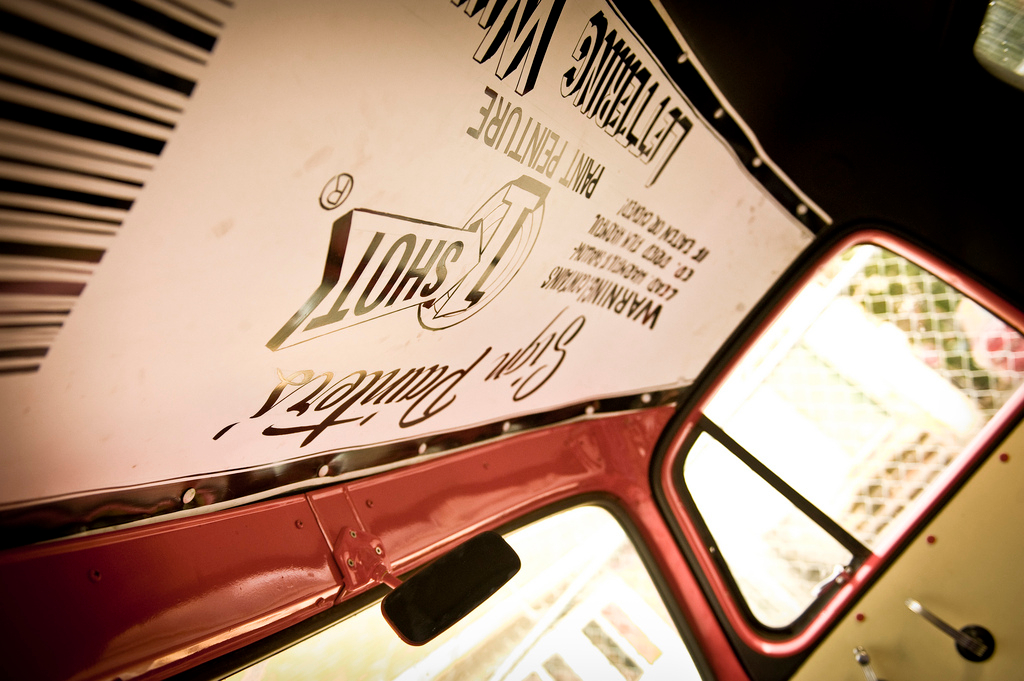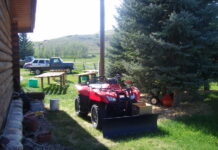
Got an old car? You’ve probably got a headliner that’s sagging, too.
Whether you’re an advanced auto-detailer or even just a casual do-it-yourselfer, choosing the best headliner adhesive for your vehicle will make this inconvenient task quick and easy.
7 Top Rated Headliner Adhesives with Reviews
- Exceptional strength bonds heavyweight automotive headliners
- Versatile formula effectively bonds headliners to metal and plastic
- Aerosol can dispenses a controlled, even layer on surfaces
- Recommended for automotive headliners in vehicles
- Formula dries in 30 to 60 minutes
- Versatile formula effectively bonds fabric, foam and plastic to metal
- Exceptional strength bonds heavyweight automotive materials
- Aerosol can dispenses a controlled, even layer on surfaces
- Recommended for headliners, carpets, and other fabrics in vehicles
- Heavy duty - dries permanent
- Repositionable, non-yellowing, Photo safe
- Comfort nozzle - wide pad, controlled fine mist - even application
- Meets new VOC standard
- Bonds – wood, metal, fabric, foam, plastic, paper, glass leather and more
- Exceptional strength bonds heavyweight automotive materials
- Versatile formula effectively bonds fabric, foam and plastic to metal
- Aerosol can dispenses a controlled, even layer on surfaces
- Recommended for headliners, carpets, and other fabrics in vehicles
- Formula dries in 30 to 60 minutes
- FOR INDUSTRIAL USE ONLY: This product is designed exclusively for industrial applications
- GO-TO SOLUTION: A high-strength, fast, contact-type adhesive
- SPECIAL DISPENSING: Comes with a variable-width web spray pattern
- A RESILIENT OPTION: Offers high-temperature and moisture resistance
- APPLICATIONS include interior construction-insulation, HVAC, office partition; general industrial maintenance and repair projects; large, surface bonding of wood, laminates, particle board, and MDF
- Premium quality clear formula for arts and crafts, paper, cloth, cardboard, cork and many other materials
- Use for temporary or permanent bonds
- Dries quickly
- EFFECTIVE spray glue provides a secure bond in 15 seconds to 30 minutes
- IDEAL FOR LIGHT-DUTY MATERIALS including paper, fabric, felt, wood, cork, flexible foam, plastic film, foil, cardboard, fiberglass insulation, plastic, glass and more
- OTHER USES INCLUDE crafts, school projects, art projects, photo albums, light-duty repairs, light-duty soundproofing, decorating, and more
- PHOTO-SAFE ADHESIVE is great for creating albums and archiving
- Available in multiple sizes and variations
Affiliate links / Images from Amazon Product Advertising API
The following buyer’s guide will provide you with tips and tricks to do the work.
Read customer reviews of headliner adhesive products on Amazon.
Buyers guide for the best adhesive for headliners
It may seem counter-intuitive to produce a buyers guide for headliner adhesive because you just need one that keeps it stuck, right?
But the first step is to get the right adhesive product.
Go to your local auto parts store rather than a craft store when shopping, as not all adhesives are created equal.
You’ll want a headline adhesive specifically made to handle the temperature variations that a car is subjected to during cold winter weather and in the summer when the sun bakes the roof.
Avoid rubberized adhesives as these perform poorly in hot weather.
Also, you need to take into account the type of material the headliner is made of, whether there is foam behind the headliner, and how much time it takes for the adhesive to cure.
The type of material the adhesive will bond is probably the most important aspect.
You’ll want one that will bond to fabric, headliners, and foam so you’re prepared if you’re unsure of what’s underneath it.
Foam usually separates the fabric from the fiberglass board, and isn’t necessary if you chose to exclude it when repairing your headliner.
Warm, sunny day project
Speaking of weather, be sure to choose a day when the weather is cooperating for a headliner replacement job.
If it is too cold out, the adhesive won’t set properly.
This job is best completed in the spring or summer, unless you have a heated work space.
A temperature between 60 and 80 degrees Fahrenheit is ideal.
Don’t be in a hurry
Removing and replacing a headliner can be a long task, as removing all of the old glue is key to a long-life. That could take anywhere from 15 minutes to who-knows-how-long depending on how dense and attached the old glue is.
The second key to getting headline adhesive right is to take your time and remove all of the old foam from the previous headliner.
Use an old wire brush or coarse sand paper to get the job done.
This is an admittedly messy job and it’s not a lot of fun, but it’s crucial to making sure your new adhesive sticks properly and lasts as long as possible.
Once you’ve removed all of the old foam, it’s time to apply the new adhesive.
Spray time
It’s important to read the manufacturer’s instructions, and you should not even consider spraying until you do so.
But most adhesives will recommend spraying both the headliner backing and the fabric you’ll be applying.
It’s best to work in sections so that you don’t have to deal with a large piece of fabric that’s tacky all at once.
Instead, do one half or one quarter of the headliner at a time and get a friend to help you so you don’t get the glue against anything you shouldn’t.
When applying the adhesive, be sure to move the spray can in all directions.
Even coverage
First coat the surface by moving from left to right, then up and down and finish with a diagonal motion.
The goal is to cover the entire surface completely. Keep the can as upright as possible while working to promote smooth, even adhesive flow.
It is also important to hold the adhesive can about six to eight inches away from the surfaces when spraying.
Get too close and the adhesive may form small lumps or otherwise texturize. This texture will show through many headliner fabrics and become a part of the ceiling in your car, making your headliner replacement job look amateurish.
Once the adhesive is applied, leave it sit for a few minutes to tack up.
The exact amount of time will vary from one adhesive to another, so read the adhesive directions thoroughly and follow them.
If you mate the two surfaces too soon, the adhesive will soak into and through your new headliner fabric causing unsightly discolorations.
When you do mate the two surfaces, 3M recommends smoothing the fabric down from the middle and working your way out. This pushes out air bubbles and helps promote a smooth, tight fit.
Need to do it over?
Wait again after gluing down the new headliner material to allow the bond to stiffen, which could take up to 24 hours.
If you try to reinstall the headliner too soon you risk shifting the material or creating bulges and bubbles in it.
Like the discoloration that occurs when the glue isn’t allowed to tack up, these bubbles and wrinkles will be a permanent part of the headliner.
When smoothing your new headliner over the headliner backing, be aware of the type of material you have chosen.
If you are using another material with a foam rubber backing, be sure to smooth the fabric with the palm of your hand rather than your fingertips so you don’t leave divots in the headliner.
If you take a little time and do the job right, you’ll get very professional results for very little money in your own garage.
Get it wrong, however, and your new headliner will look almost as bad as your old one and soon be flapping in the breeze and hitting you in the head.
The key is getting the best headliner adhesive and installing it right.
Find the best headliner adhesive in 2023 on Amazon.
Originally posted 2023-01-06 18:21:31.


